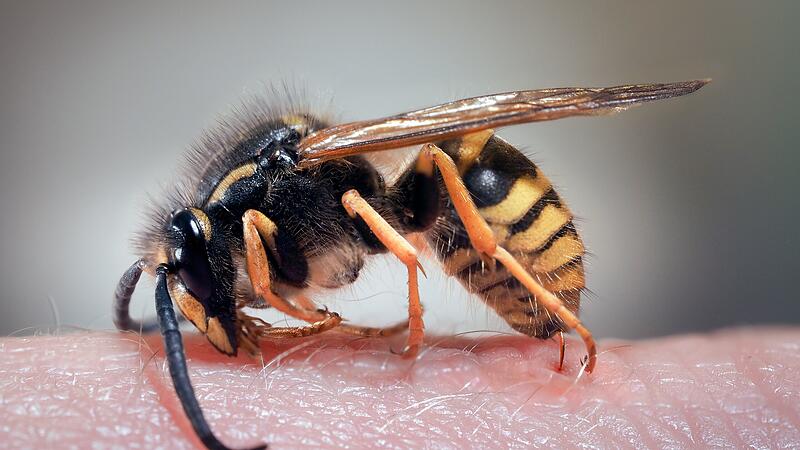Image: Shutterstock/Irina Kozorog, royalty free
Breakfast on the balcony, coffee and cake in the guest garden or a barbecue on the terrace – it’s buzzing and the wasps are there. A brief moment of inattentiveness and then the sting happened. “Wasp stings are toxic to everyone, but not everyone has the same reaction to the venom. Basically, every sting and the reaction to it should be properly treated and observed,” says Prim. Thomas Mark, leader
the Department of Internal Medicine at the Pyhrn-Eisenwurzen Klinikum Kirchdorf.
When does a sting become an emergency?
“Itching, red skin and swelling around the bite are uncomfortable but harmless reactions that can be easily treated at home. If nausea, chills, shortness of breath and/or circulatory problems occur immediately after the sting, the rescue service should be called, because these are signs of a wasp sting allergy, which in the worst case can lead to circulatory arrest,” says the expert. Extreme caution is also required for bites in the mouth and throat. A possible swelling can make breathing difficult or prevent it. For this reason, the rescue service should definitely be alerted here as well.
First immediate measures after a sting
Unlike bees, wasps pull their stingers out after a sting. If the stinger is still in the skin, it should be carefully removed. To prevent germs from getting into the wound and, in the worst case, causing an infection, you should first let water run over the puncture site. Then carefully dry and disinfect them. “Allergy sufferers should always carry an allergy card with information about the existing allergy and also the emergency medication prescribed for them. If no allergy is known, the sting can be treated with common home remedies. Both cold and heat can relieve itching and swelling. An ice cube on the puncture site means that the skin is less well supplied with blood and the pain decreases. Heat works the other way around – a heat stick or a hot teaspoon generates heat on the skin, which destroys the protein present in the wasp venom,” says the internist.
No stitch is best
While wasps are proven to be more active in late summer than the previous months, with a few little tricks, they’re not quite as a nuisance. For example, fluttering, dark clothing, perfumes and sweat attract the yellow-black pests particularly strongly. In order not to step on a wasp, you should always wear shoes in meadows. Allergy sufferers should wear long clothing, even on hot late summer days, to protect their skin from bites. And when it comes to drinks, the following generally applies: cover them so that no insects can bathe in them unnoticed and get a dangerous sting in your mouth or throat. The wasp season ends again in mid to late September – then the cake can be served
be enjoyed in peace in the garden.
Source: Nachrichten




